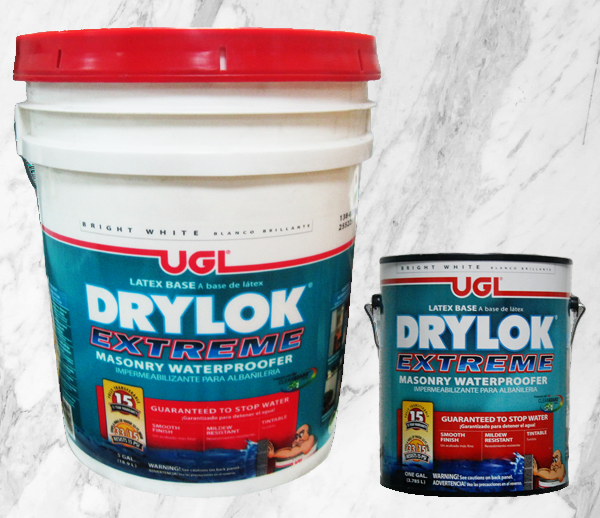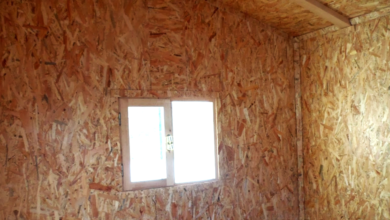Can You Use DRYLOK on Drywall?

Drylok is the ideal waterproofing product to use if you want to prevent water from leaking through brick walls. It is primarily applied to basement concrete surfaces.
Drylok can be applied to stone, stucco, and plaster in addition to concrete. Can it be used on drywall, though? Continue reading to learn more.
Drylok is suitable for use on drywall. It will waterproof the surface and stop moisture from leaking through when painted on drywall. We are all aware that drywall is not waterproof.
As a result, it will become softer and may develop mold when exposed to water. It will be more resilient to water damage, though, if a waterproof sealer like DRYLOK is used.
Is Drylok the Best Waterproofing Product for Drywall?
When it comes to sealing or stopping the flow of moisture or water, drylok works incredibly well. It’s not the most practical way to waterproof drywall, either.
The easiest way to deal with leaks or high humidity is to replace your drywall with a green board. Another option is to cover the drywall with a vapor barrier.
Compared to painting Drylok, which should only take a short time, the later two solutions are costly and require a lot of work.
You should be aware of the following while we continue to debate whether Drylok is the best waterproofing product for drywall.
If you have mild humidity, some experts advise using gloss paint rather than Drylok. Because gloss paint functions as a vapor barrier, moisture will bead up on its surface and finally fall to the ground rather of passing through.
Does Drylok Give Drywall Texture?
The fact that Drylok waterproofer adds texture to drywall is one of its disadvantages. Since few homeowners are concerned about the wall finish in their basements, drylok is mostly employed to seal these spaces.
However, the surface will be rough and less appealing if Drylok is used in a space like a kitchen or bathroom. You must be prepared to handle this situation.
Because gloss paint keeps moisture out and looks far better than drylok, many people prefer to use it.
How Can Drylok Be Painted on Drywall?
It’s time to learn how to use Drylok properly now that you are aware of its application on drywall, the risks involved, and the alternatives. Drylok looks a lot like ordinary paint, but it is applied a little differently.
Additionally, how well the Drylok is installed affects how long it will last on walls and how well it keeps water out.
Here’s a little tutorial on painting Drylok on drywall:
-
Step 1: Get the drywall ready.
If you have made the decision to use Drylok to waterproof drywall, do not apply it right away. Start by getting the walls ready.
Using a wire brush to remove any loose dust, debris, and paint is the finest method for preparing drywall. Clean the drywall by giving it a scrub. Because drywall can discharge a lot of dust, wear a dust mask.
You must evaluate the state of the drywall before proceeding to the following stage. Any chips or dents must be repaired since they will let moisture to seep in. Therefore, any drywall cracks or holes must be repaired as away.
-
Step 2: Use a brush or roller to apply the Drylok.
The ideal choice is a roller since it facilitates quick and simple application. My favorite thing about Drylok is that, when applied properly, it will enter the drywall’s pores and form an unbreakable barrier.
Drylok should be applied just like paint. Paint it while the temperature is about 50 degrees Fahrenheit to ensure adequate adhesion.
Make sure the paint reaches the drywall’s pinholes as you apply it. Avoid going overboard because that will cause the walls to leak. About two applications of Drylok must be applied. However, let each coat dry for a few hours.
Spills of drylok are simply cleaned with soap and water. But if you leave them on for a long time, they can be a little stubborn. Make sure you clean up right away. Avoiding thinning the waterproofer is another rule of thumb when using Drylok.
Drylok looks overly thick, so it can be tempting to dilute it. By doing this, the waterproofer’s molecular strength is weakened and its effectiveness may be compromised.
How Much Drylok Is Needed for Drywall Painting?
About 500 square feet may be covered with one gallon of Drylok. In order to purchase enough Drylok, you must determine how many drywalls require waterproofing.
There is still a moisture issue with your drywall that needs to be fixed.
Although Drylok can waterproof drywall, this is really a short-term fix. Ultimately, you will have to deal with the water or moisture source. The drywall isn’t made to withstand constant moisture contact.
As a result, water will eventually harm it. Identifying and removing the water source is the best course of action in this situation. It must be addressed if the leak is coming from a pipe. Alternately, a drain inside the walls must be installed.
Don’t expect that the drywall will be water-resistant for years after using Drylok to cure it.
What Side of the Drywall Is Best for Applying Drylok?
When it comes to using Drylok on drywall, there is one crucial aspect that we haven’t covered: which side to paint it on. There are two sides to the drywall.
There are the front side and the side with the paper backing. Avoid painting the paper-backing side of drywall with Drylok since it won’t adhere correctly. It should be applied on the side that faces inside.
Drylok vs. Drywall Waterproofing Primer
There are numerous methods for waterproofing drywall, as was previously discussed. Some choose to use waterproof paints like Drylok, while others would rather use a greenboard.
But there is another waterproofing technique that is just as efficient, time-consuming, and reasonably priced. It involves the application of a waterproofing primer.
If you want to protect your drywall from moisture and humidity, waterproofing primers can keep mold at bay and stop water from penetrating.
Waterproofing primers are incredibly smooth and have a more attractive appearance than Drylok, which leaves a rough surface. As if that weren’t enough, waterproofing primers in latex or oil are also available. Thus, you have a number of possibilities to pick from.
Applying waterproofing primers to drywall is much the same procedure as applying Drylok. The walls require cleaning and dusting. Additionally, you can use a brush or roller to apply the lotion.
The use of waterproofing primers is more common than membranes like Drylok for drywall sealing. You should compare the two possibilities and decide which is better.
Is Drylok Compatible with Greenboard Drywall?
Water resistance is already present in greenboard drywall. As a result, Drylok waterproofing membrane does not need to be applied over it. It would be a waste of time and money to do so.
Use a greenboard rather than ordinary drywall the next time you have a building project where you anticipate high levels of moisture or exposure to water. Although it’s a little costly, the investment is worthwhile.

